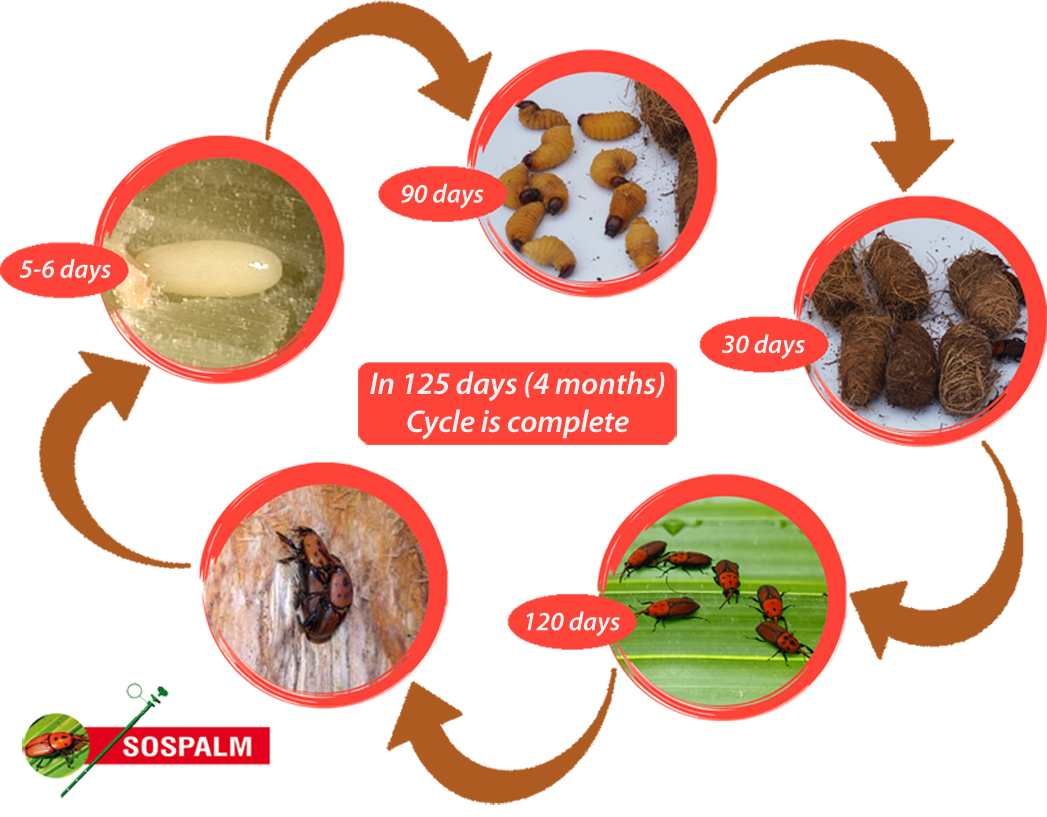Rhynchophorus ferrugineus (Olivier, 1790), commonly known as Red Palm Weevil, or in its denomination according to the countries, Picudo Rojo, Becut Vermell, Morrut Roig, or Picut Roig, Punteruolo rosso, Escaravelho vermelho, Charançon rouge, سوسة النخيل الحمراء, Sosat al nkhil alhamraa, It is a beetle from Southeast Asia which has spread rapidly due to its great capacity to multiply and because of the breach of the protocols designed for the management of infested specimens and the transport of those specimens to plague-free areas .
These are the reasons why the red palm weevil is present throughout Europe, especially in the Mediterranean Europe, although it is not exempt from its presence in continental Europe, where winter temperatures are well below zero Ceisius degrees. Nor have the Mediterranean islands been saved from the attacks, being habitual the observation of dead palm trees on the promenades of tourist cities being, giving a calamitous image, nothing attractive for quality tourism.
The most extreme case is that of the Canary Islands, where the Canarian palm (Phoenix canariensis) is an indigenous species.
The worldwide distribution reflects the plague’s ability to multiply and invade new spaces. From Asia, India, the Philippines, Cambodia, Indonesia, Vietnam, Japan, China and Thailand. Its implantation in countries of the American continent is irreversible. The southern United States, Central America and northern South America know of their voracity, aggravated by the presence of their cousin, Rhynchophorus palmarum L. also known as casanga or black palm weevil, it is the vector of the Rhadinaphelenchus cocophilus nematode(Coob), a causative agent of the red ring, short leaf, a deadly disease for the palms because it causes the but to rot.
The worldwide distribution is a proof of the failure of controls and commercial interests that have led the red palm weevil to be a concern for individuals, professionals and administrations that are forced to have resources to prevent the loss of difficult replacement trees and endanger the livelihood of farmers producing dates, palm oil or coconuts and their derivatives.
The current situation makes it impossible to think about eradicating the red palm weevil and we will have to live with the plague, focusing all the efforts to control it and reduce its impact.
Being an invasive species, there are no predators that can help to decrease its spread.

